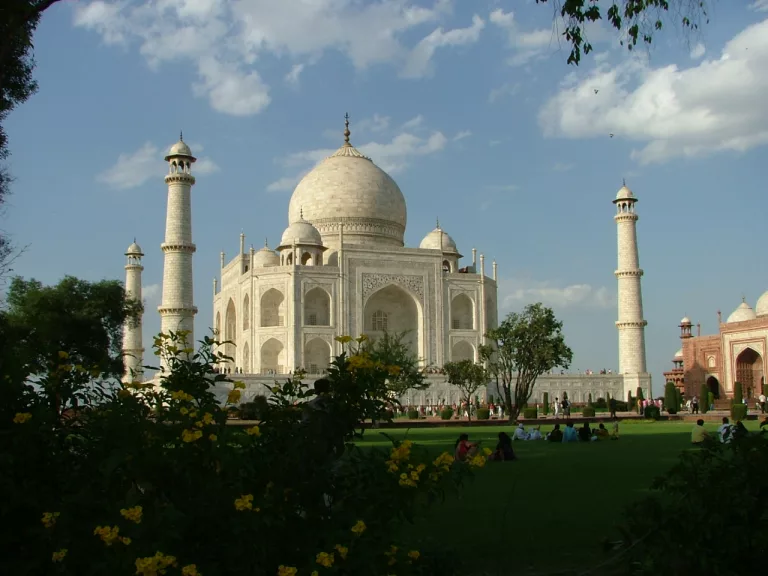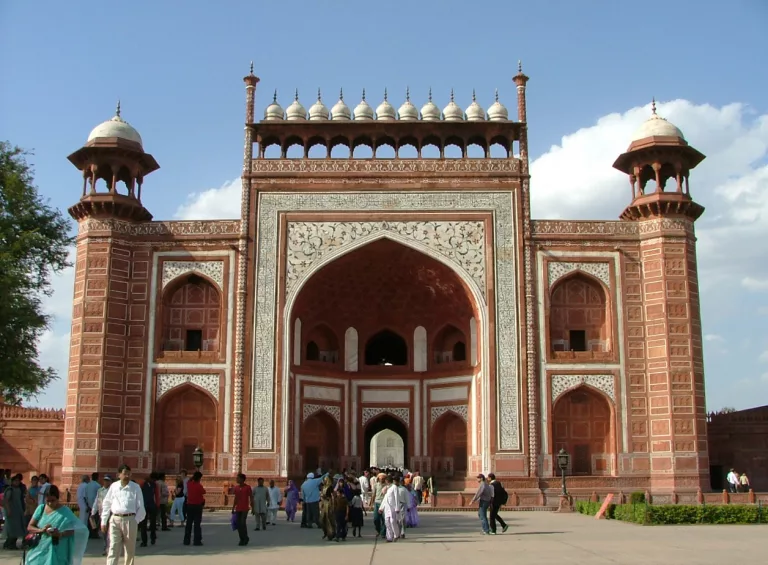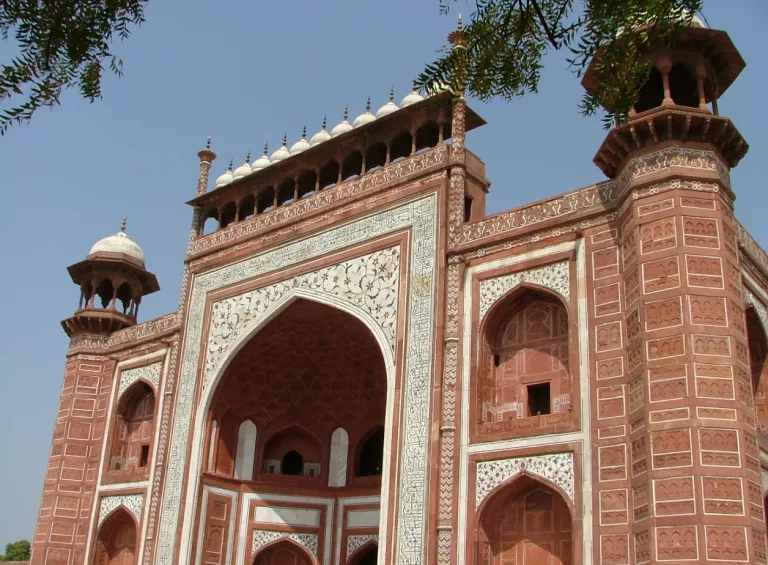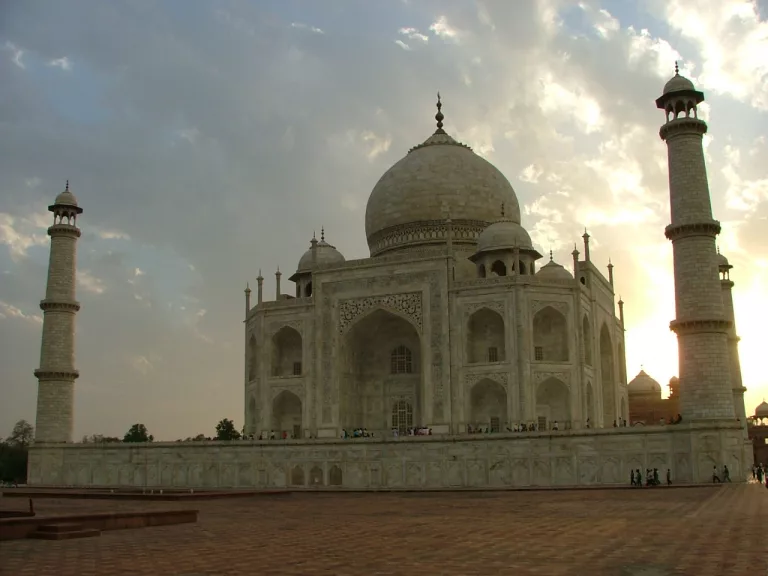She bore him 14 children, out of which only 7 survived and she passed away giving birth to her fourteenth child in Burhanpur in 1631. Torn by her death, Shah Jahan immediately began construction of a mausoleum in Agra in 1632. It was to be unlike any monument the world had ever seen. The construction finally finished in 1653, taking a total of 21 odd years to complete a magnificent monument with a love story at its heart. There were 22000 artisans engaged in building the Taj which explains the sheer magnificence of the building.
Unlike the other buildings during the times of the Mughals in red sandstone, Shah Jahan decided to build this building with the finest grade of white marble. The marble was obtained from a quarry situated in Makrana, a small city in Rajasthan, a state of India. It is about 340 kms from Agra. But just plain white marble was not used in its construction, the marble was inlaid with precious and semi-precious stones like lapis lazuli, turquoise, jasper, chalcedony, coral, onyx, jade, amethyst, green beryl or emerald. These precious and semi-precious stones form a mosaic of flowers, leaves and geometrical patterns both outside and inside of the Taj.






